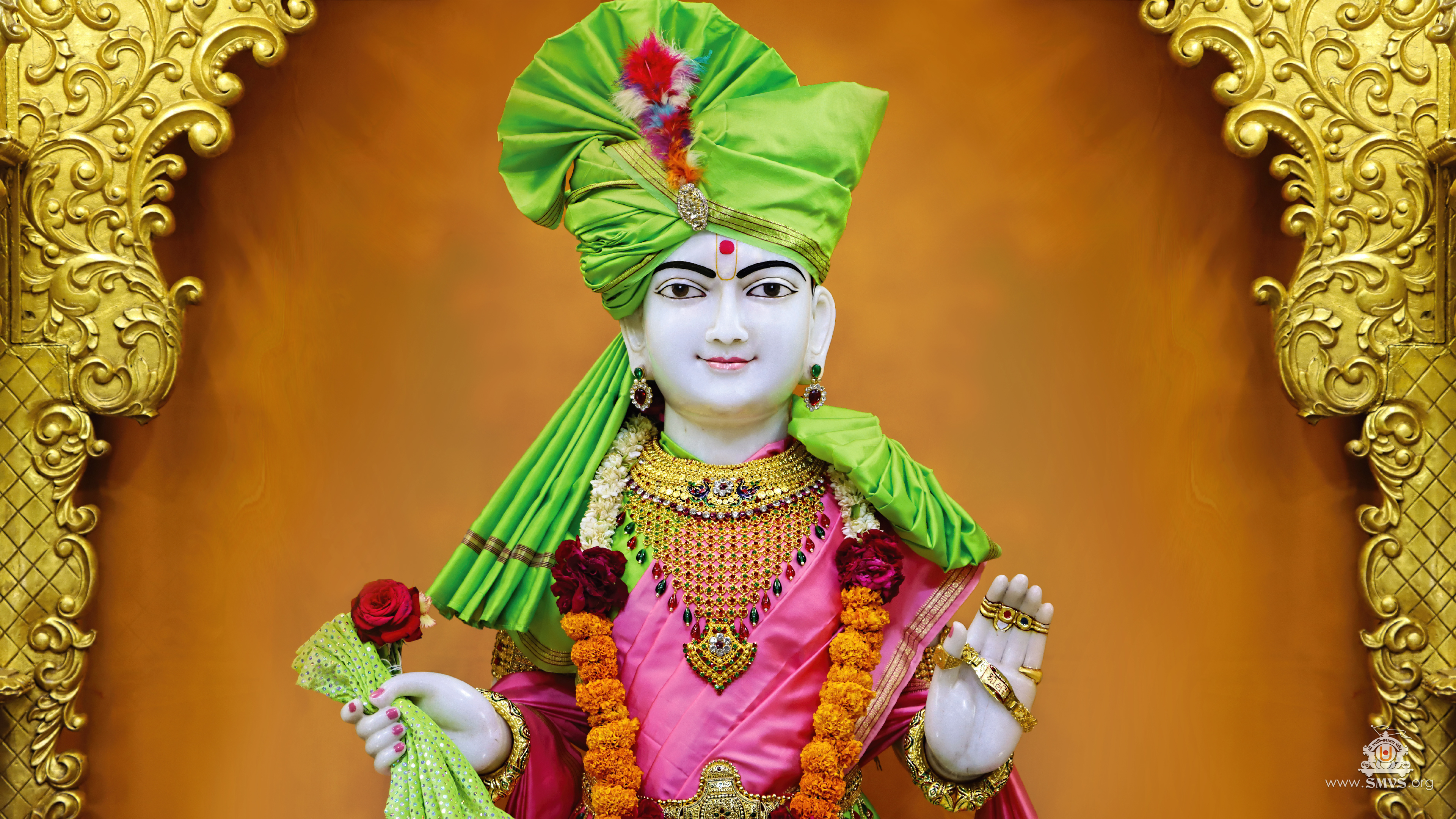SMVS Siddhant Sutra / Principle Statement

“To understand the supreme Upasana of Lord Swaminarayaṇ and
attain the ultimate status of an Anadimukta is Karaṇa satsang.”
“સર્વોપરી સ્વામિનારાયણ ભગવાનની ઉપાસના દૃઢ કરી,
અનાદિમુક્તની સ્થિતિ પામવી એ જ કારણ સત્સંગ.”
सर्वोपरी स्वामिनारायण भगवान की उपासना दृढ कर,
अनादिमुक्त की स्थिति प्राप्त करना वे ही कारण सत्संग ।
सत्संगो कारण, सर्वोपरी स्वामिनारायण भगवत: ।
उपासनां कृत्वा, अनादिमुक्तस्थितिसायुज्यम् एव ।।
Every organization’s philosophy is deeply rooted in its guiding principle. The principle of SMVS is a clear reflection of the organization’s entire philosophy. Let’s understand the organization’s philosophy through this principle.
1. What is Siddhant / principle?
Siddhant, or principle, refers to what is meant to be achieved at the conclusion of Upasana, devotion, worship, or spiritual practice.
What is a Siddhant Sutra / Principle Statement?
A Siddhant Sutra, or Principle Statement, is the statement where the organization’s core principle is explicitly stated.
What is the Siddhant Sutra of SMVS?
SMVS’ Siddhant Sutra is: ‘To understand the supreme Upasana of Lord Swaminarayan and attain the ultimate status of an Anadimukta is Karan Satsang.’
What is the reason behind SMVS’ principle?
The establishment of SMVS is to carry forward the principles taught by Lord Swaminarayan, further expanded by Abjibapashri, and to instill these values in people for generations to come. To uphold these principles, Abjibapashri clarified the distinction between Karya Satsang and Karan Satsang, encouraging less emphasis on Karya Satsang and a greater focus on Karan Satsang by cultivating a Karan-focused mindset. Therefore, it is natural for SMVS’ Siddhant Sutra to align with this path.
Even so, some may still wonder about the significance of the Siddhant Sutra. While it remains the guiding principle for SMVS as an organization, it is also meant to be held as a personal principle for one’s own progress. If this core principle continues to guide SMVS, then any temples built, spiritual or organizational work carried out, events or programs organized, and service activities performed will all align with this principle—ensuring that the organization’s vision and mission stay consistent. In the same way, if everyone involved with SMVS keeps this Siddhant Sutra as their own principle, whatever path they follow—spiritual, work, or personal—there will be a steady pursuit of Siddhant, resulting in a clear and unwavering vision for their goals and efforts. Karan Satsang is also called Murti Satsang, where God is the central and most important focus. To understand the supreme Upasana, reach the ultimate status of Anadimukta, and achieve the pleasure of the Murti by embodying the divine form of the Murti is the true goal.
Abjibapashri stated, “Even if you take countless births and engage in Karya Satsang, a single moment of Karan Satsang is far superior.” The Siddhant Sutra of SMVS is meant to fulfill Abjibapashri’s words by fostering a divine Karan Satsang community.
5. What does the Siddhant Sutra of SMVS imply?
The Siddhant Sutra of SMVS represents the entire journey of Karan Satsang. The ultimate goal of every soul is salvation—Shriji Maharaj’s Murti’s eternal bliss. The journey to attain this happiness is described in the Siddhant Sutra, where understanding the supreme Upasana of Lord Swaminarayan is the starting point and attaining the status of Anadimukta is the destination.
Therefore, this Siddhant Sutra makes it clear that Karan Satsang is about accomplishing both Upasana and the Anadimukta status. It also means SMVS is dedicated to advancing and upholding the principles of Karan Satsang.













